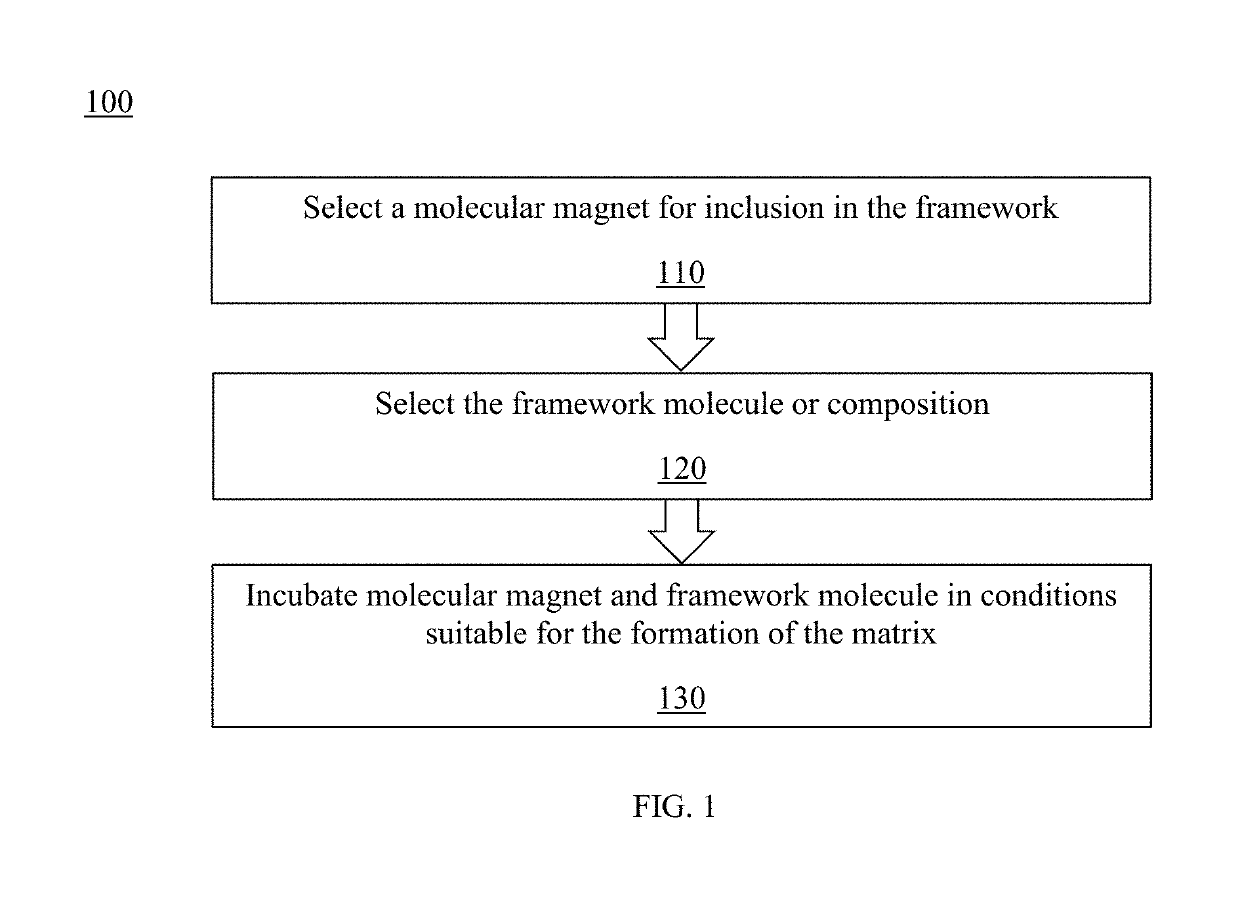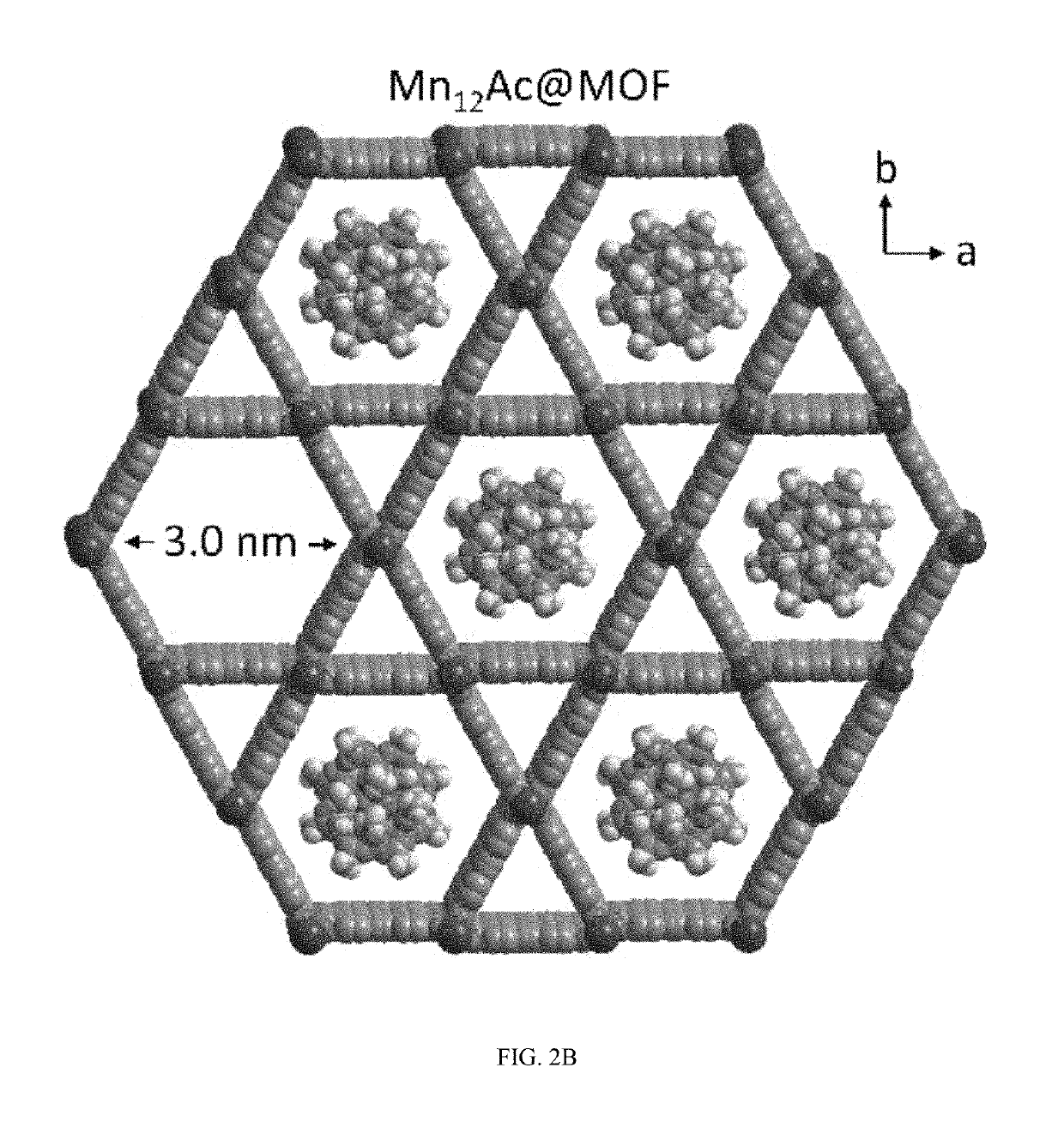Method and system for controlled nanostructuring of nanomagnets
- Summary
- Abstract
- Description
- Claims
- Application Information
AI Technical Summary
Benefits of technology
Problems solved by technology
Method used
Image
Examples
Embodiment Construction
[0033]Referring now to the drawings, wherein like reference numerals refer to like parts throughout, there is seen in FIG. 1 a flowchart of a method 100 for the incorporation of molecular magnets into a framework matrix, in accordance with an embodiment. At step 110 of the method, a molecular magnet is selected for inclusion in the framework molecule matrix. The magnet molecule may be any known or discovered molecular magnet, including but not limited to an SMM and / or an SCM. One suitable molecular magnet, for example, is the SMM Mn12O12(O2CCH3)16(OH2)4 (also known as Mn12Ac). Other examples of suitable SMM molecules include {Dy2}SMM: [Dy2(valdien)2(L)2].solvent, where H2valdien=N1,N3-bis(3-methoxysalicyldiene) diethylenetriamine, L═NO3−, CH3COO−, ClCH2COO−, Cl2CHCOO−, CH3COCHCOCH3−; Ni8SMM: {[Ni2(mpba)3][Ni(dpt)(H2O)]6}(ClO4)4.12.5H2O where mpba=N,N′1,3-phenylenebis-(oxamate), dpt=dipropylenetriamine; and other members of Mn12SMM family: Mn12O12(O2CCH2Br)16(H2O)4].4CH2Cl2, Mn12O12(...
PUM
| Property | Measurement | Unit |
|---|---|---|
| diameter | aaaaa | aaaaa |
| blocking temperatures | aaaaa | aaaaa |
| temperatures | aaaaa | aaaaa |
Abstract
Description
Claims
Application Information
 Login to View More
Login to View More - R&D
- Intellectual Property
- Life Sciences
- Materials
- Tech Scout
- Unparalleled Data Quality
- Higher Quality Content
- 60% Fewer Hallucinations
Browse by: Latest US Patents, China's latest patents, Technical Efficacy Thesaurus, Application Domain, Technology Topic, Popular Technical Reports.
© 2025 PatSnap. All rights reserved.Legal|Privacy policy|Modern Slavery Act Transparency Statement|Sitemap|About US| Contact US: help@patsnap.com



